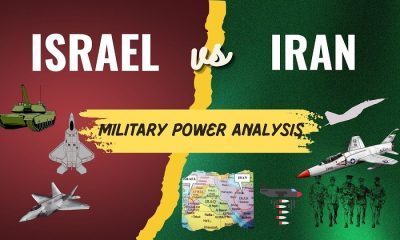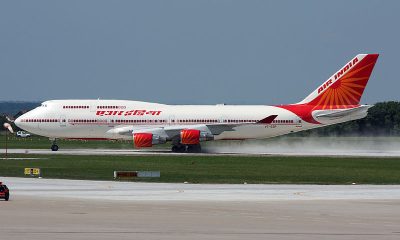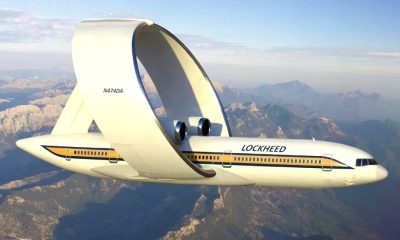Aerospace
Tejas Mark 2 is been approved for manufacturing : GOI
India has secured government sanctions and funds totaling Rs 10,000 crores of rupees ( $1,256 billion ) to move forward with the development of fighter jets.
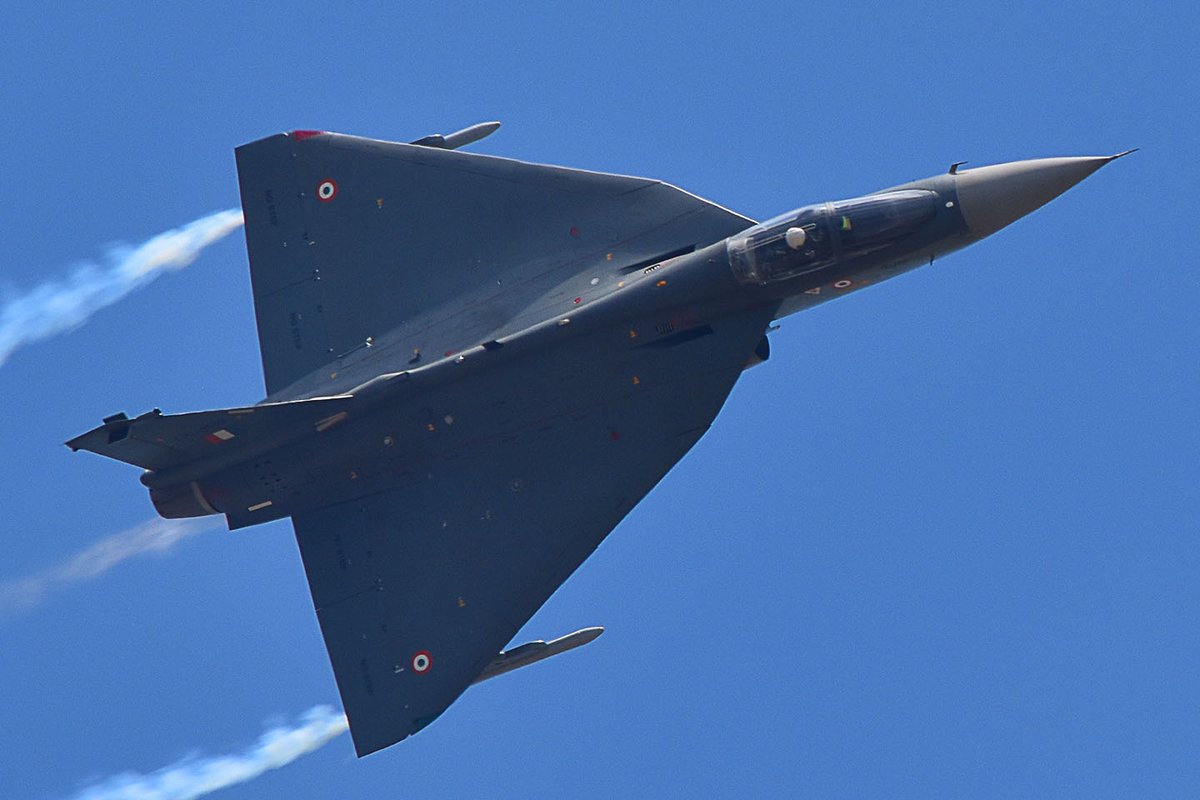
India has secured government sanctions and funds totaling Rs 10,000 crores of rupees ( $1,256 billion ) to move forward with the development of fighter jets. The financing to launch the anticipated Tejas mark2 project, an updated version of the previous version of a fighter jet, has been eagerly anticipated for a long time.
The Tejas Mark-2 development project, which will cost over Rs 10,000 crore, was approved by the Cabinet Committee on Security (CCS).
In the next months, CCS will also approve the necessary financing for the development of AMCA aircraft, which is anticipated to cost over 15,000 crores.
Tejas Mark 2 will feature GE 414 engines and be able to produce up to 98 kilonewtons of thrust class. Compared to Tejas Mark 1, it will be able to engage in longer battles and carry more weapons.
Tejas Mark 1 will take the role of the antiquated Mig 21, often known as the “flying coffin,” which has earned a terrible reputation due to several crashes. The combat fleet of the IAF will also include successful jets like the Mirage 2000, Jaguar, and MiG 29.
The Mark 2 fighter’s medium weight will be employed for powerful standoff weapons, whereas the Tejas Mark 1 is primarily used for air defense.
Out of the 123 aircraft that the IAF has previously ordered, 30 are already in service with the defense fleet. By 2024 and beyond, an additional 73 enhanced Mark1A fighters and 10 trainers will be supplied. With the aid of DRDO and the Aeronautical Development Agency, the Tejas Mark 2 is expected to make its first flight in two to three years and start manufacturing by the year 2030.
The IAF urgently needs Tejas jets to increase the size of its fighter squadrons, which are currently only 32 but at least 42 are needed to counter the “collusive threat” from China and Pakistan.
As of right present, the IAF only has 32 aircraft, but it still needs 10 more to prepare a defensive reaction for the borders with China and Pakistan. A different advanced stealth fighter, weighing an additional 25 tonnes, is expected to enter production only by 2035.
With a 110 Kilonewton engine needed for AMCA, which is far more powerful, India is currently looking into co-development opportunities with businesses like the French Safran Group.
Modern stealth capabilities in the swing role The AMCA will include radar-absorbing materials and conformal antenna in addition to a “serpentine air-intake” and an interior bay for smart weaponry.

Aerospace
Indigo will soon launch Air Taxi Service in India
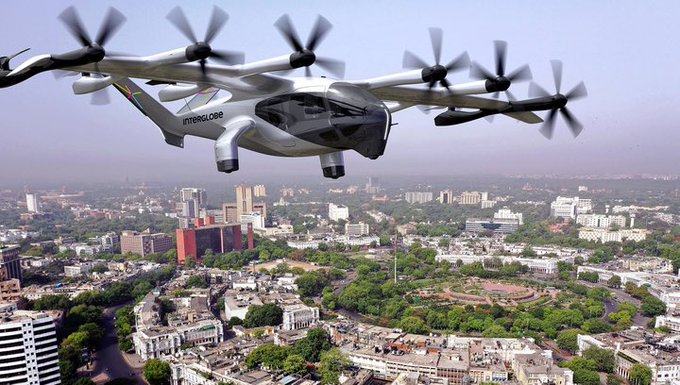
InterGlobe Enterprises, the parent brand of IndiGo, is set to revolutionize travel in India with its upcoming air taxi service.
Scheduled for a potential launch in 2026, this innovative venture promises a seamless journey for passengers between two bustling hubs. Delhi and Gurgaon in Haryana. The forthcoming service is projected to revolutionize the daily commute, offering passengers a swift aerial journey covering the distance in a mere 7 minutes.
This remarkable efficiency contrasts starkly with the conventional 90-minute drive, underscoring the immense time-saving potential for commuters. The anticipated fare, ranging from Rs 2,000-3,000, makes this innovative mode of transport not only swift but also remarkably competitive in pricing.
At the heart of this ambitious endeavor lies a strategic partnership with Archer Aviation, a pioneer in electric vertical takeoff and landing (eVTOL) aircraft technology. Under this collaboration, Archer will supply 200 state-of-the-art eVTOL aircraft, representing an investment of US$ 1 billion. These cutting-edge aircraft, capable of accommodating up to four passengers alongside the pilot, epitomize the future of sustainable air travel.
Powered by six battery packs, Archer’s eVTOL aircraft boast rapid charging capabilities, enabling a swift turnaround between flights. With a charging time of just 30-40 minutes, these eco-friendly aircraft ensure minimal downtime, maximizing operational efficiency.
Similar services are anticipated to be introduced by the joint venture in Bengaluru and Mumbai as well. Nevertheless, the service rollout period has not yet been made public by the company. Next year, it is anticipated to get its certification. Following this, the company will start the certification procedure with the Directorate General of Civil Aviation (DGCA).
Aerospace
Which is bigger 777x or 787 aircraft ?
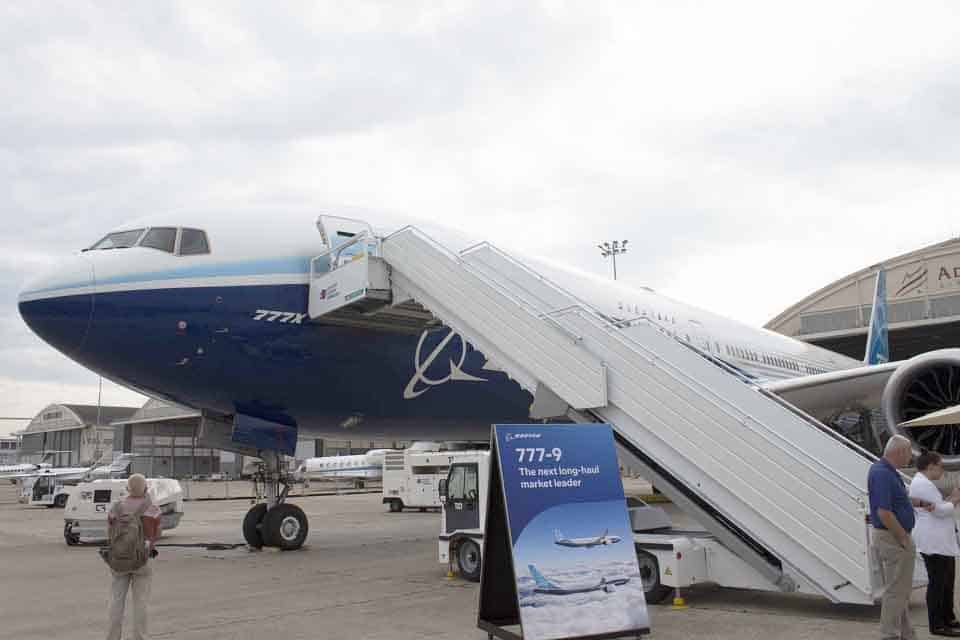
The 777X is a new series of the Boeing 777 family and is designed to be larger and more efficient than its predecessor. It features two variants: the 777-8 and the 777-9, being the larger of the two.
The Boeing 777X emerges as the larger sibling within the Boeing family, representing a significant leap forward in both size and efficiency. Comprising two variants, the 777-8 and the 777-9, the latter takes the crown as the larger of the two. With its expansive fuselage and impressive wingspan, the 777X is tailored for long-range journeys and boasts a substantial passenger capacity.
On the other hand, the Boeing 787, affectionately known as the Dreamliner, occupies a niche in the market as a smaller yet formidable aircraft designed for medium to long-range flights. Its distinguishing feature lies in its composite fuselage, a technological marvel that renders it lighter and more fuel-efficient compared to conventional aluminum counterparts. The Boeing 777X is larger than the Boeing 787 aircraft.
When it comes to passenger capacity, the 777-9 reigns supreme, typically accommodating a sizeable contingent of 400-425 passengers in its standard configuration. In contrast, the 787, with its more modest dimensions, typically carries between 240-290 passengers, depending on the variant and layout.
One of the remarkable innovations introduced with the 777X is its folding wingtips, a feature designed to address the logistical challenges of accommodating such a large aircraft in conventional airport gates. These folding wingtips enable the 777X to retract its wings, allowing it to fit into gates designed for smaller aircraft while still reaping the benefits of an extended wingspan during flight, thereby enhancing fuel efficiency and operational flexibility
Aerospace
China Secures Production Certificate for Mass Production of Pilotless eVTOL Aircraft
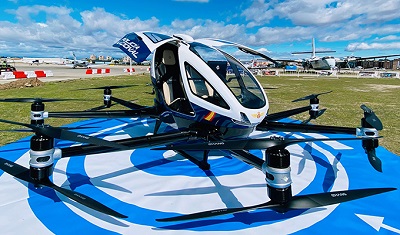
The first passenger-carrying pilotless electric vertical takeoff and landing (eVTOL) aircraft in the world, the EH216-S, has received the Production Certificate for its eVTOL aircraft from the Civil Aviation Administration of China (CAAC).
This is a significant milestone for EHang Holdings Limited, the leading UAM technology platform company in the world. This outstanding accomplishment is another big step towards mass manufacturing for the eVTOL aircraft and the ensuing commercial operations, building on the ground-breaking acquisition of the Type Certificate and the Standard Airworthiness Certificate for the EH216-S.
The PC is a crucial certificate that the aircraft maker receives from the CAAC, the country’s aviation authority. By obtaining this certificate, EHang has demonstrated that it has set up a quality management system for mass production that satisfies the airworthiness regulation standards set forth by the CAAC, and the company has been given permission to continue producing mass quantities.
It is also a strong guarantee of the calibre of the goods made by EHang. Raw materials, supplier management, manufacturing organisation, production quality control, aircraft pre-delivery test, after-sales repair and maintenance, etc. are all included in the mass production quality management system for the EH216-S.
To ensure that every aircraft and its components that roll off the production line strictly adhere to the approved type design and safety requirements, the system sets clear guidelines and documentation for every step in the production procedure. This ensures comprehensive traceability and safety control.
















